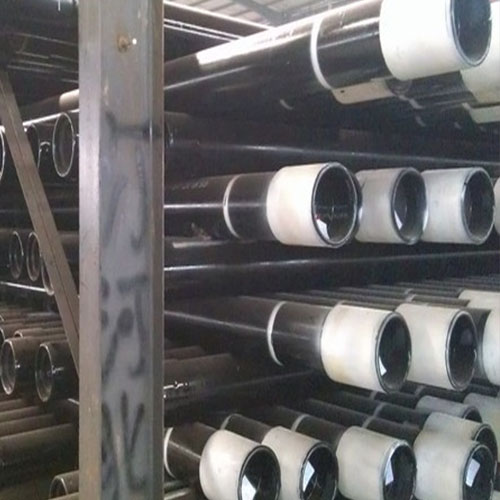Table of Contents
Benefits of Using Q345B and Q355B Seamless Piping in Industrial Applications
In the world of industrial applications, the choice of piping material plays a crucial role in ensuring the efficiency and reliability of operations. Two popular options that are widely used in various industries are Q345B and Q355B seamless piping. These types of piping are known for their high strength, durability, and resistance to corrosion, making them ideal for a wide range of applications.
Q345B and Q355B seamless piping are made from high-quality Carbon Steel, which is known for its excellent mechanical properties. These materials are commonly used in industries such as oil and gas, petrochemical, construction, and manufacturing due to their superior strength and toughness. The seamless design of these pipes eliminates the need for welding, which can weaken the structure and increase the risk of leaks or failures.
One of the key benefits of using Q345B and Q355B seamless piping is their high tensile strength, which allows them to withstand high pressure and temperature conditions. This makes them ideal for applications where reliability and Safety are paramount, such as in the transportation of hazardous materials or in high-pressure systems. Additionally, the seamless design of these pipes ensures a smooth flow of fluids, reducing the risk of blockages or restrictions that can impede operations.
Another advantage of Q345B and Q355B seamless piping is their resistance to corrosion. Carbon steel is inherently resistant to rust and corrosion, making it a durable and long-lasting material for piping systems. This resistance to corrosion is essential in industries where exposure to harsh Chemicals or environmental conditions is common, as it helps to prolong the lifespan of the piping and reduce maintenance costs.
In addition to their strength and durability, Q345B and Q355B seamless piping are also known for their versatility and ease of installation. These pipes can be easily cut, shaped, and welded to fit specific requirements, making them suitable for a wide range of applications. The seamless design of these pipes also ensures a tight seal, reducing the risk of leaks and ensuring the efficient flow of fluids.
Furthermore, Q345B and Q355B seamless piping are cost-effective solutions for industrial applications. The high strength and durability of these materials mean that they require less maintenance and replacement compared to other types of piping, saving time and money in the long run. Additionally, the seamless design of these pipes reduces the risk of leaks and failures, further lowering maintenance costs and minimizing downtime.
In conclusion, Q345B and Q355B seamless piping offer a range of benefits for industrial applications, including high strength, durability, resistance to corrosion, versatility, and cost-effectiveness. These materials are widely used in various industries due to their superior performance and reliability, making them a popular choice for piping systems. Whether you are working in the oil and gas, petrochemical, construction, or manufacturing industry, Q345B and Q355B seamless piping are excellent options to consider for your next project.
Comparison of Grade 10# and 20# Steel Piping: Which is Better for Your Project?
When it comes to choosing the right steel piping for your project, there are a variety of factors to consider. Two common grades of steel piping that are often used in construction and industrial applications are Grade 10# and Grade 20#. Both grades have their own unique properties and characteristics that make them suitable for different types of projects. In this article, we will compare Grade 10# and Grade 20# steel piping to help you determine which is better suited for your specific needs.

Grade 10# steel piping is a low carbon steel that is commonly used in structural applications. It has a relatively low tensile strength and is not as strong as some other grades of steel piping. However, Grade 10# steel piping is known for its excellent weldability and formability, making it easy to work with and manipulate. This makes it a popular choice for projects that require a high degree of customization or intricate designs.
On the other hand, Grade 20# steel piping is a medium carbon steel that is known for its high tensile strength and durability. It is often used in applications where strength and reliability are paramount, such as in the construction of bridges, buildings, and other structures that require a high degree of structural integrity. Grade 20# steel piping is also resistant to corrosion and can withstand harsh environmental conditions, making it a versatile and long-lasting option for a wide range of projects.
When comparing Grade 10# and Grade 20# steel piping, it is important to consider the specific requirements of your project. If you need a steel piping that is easy to work with and can be customized to fit your exact specifications, Grade 10# steel piping may be the better choice. Its excellent weldability and formability make it a versatile option for projects that require a high degree of customization.
However, if strength and durability are your top priorities, Grade 20# steel piping may be the better option. Its high tensile strength and resistance to corrosion make it a reliable choice for projects that require a high degree of structural integrity. Grade 20# steel piping is also well-suited for applications where the piping will be exposed to harsh environmental conditions, as it can withstand the elements and remain strong and reliable over time.

In conclusion, both Grade 10# and Grade 20# steel piping have their own unique properties and characteristics that make them suitable for different types of projects. When choosing between the two grades, it is important to consider the specific requirements of your project and select the grade that best meets your needs. Whether you need a steel piping that is easy to work with and can be customized, or a piping that is strong and durable, there is a grade of steel piping that is right for you.

